In the 1912 presidential election (see Part 1) Democrat Woodrow Wilson, with 42 percent of the popular vote and 436 of 531 electoral votes, defeated Progressive Theodore Roosevelt (27%), incumbent President Republican William Howard Taft (23%), and Socialist Eugene V. Debs (6%). The U.S. population in 1912 was 95 million; today it is 314 million. The DJIA was 88 in 1912; it is 13,000 today. Total campaign spending in the 1912 presidential election: about $40 million in today’s dollars. Total presidential election campaign spending a century later: about $2.6 billion.
Here is a sample of day-after election coverage in the Star-Telegram:
 On the day after the election, the election had pushed the Balkans but not the Baptists off the front page. (And the rooster overlay? The rooster was a symbol of the Democratic Party back then.)
On the day after the election, the election had pushed the Balkans but not the Baptists off the front page. (And the rooster overlay? The rooster was a symbol of the Democratic Party back then.)
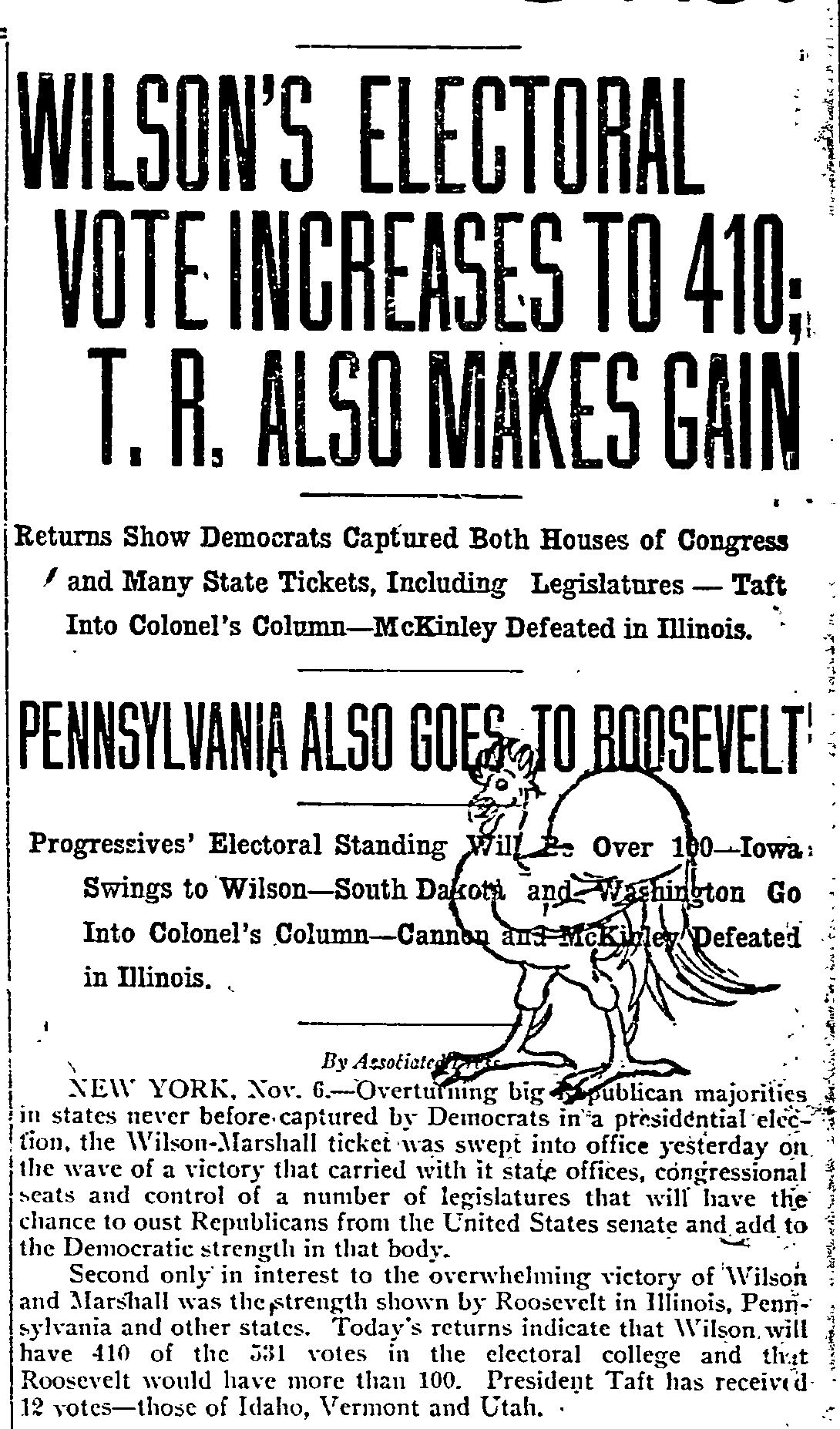 Third-party candidate Roosevelt ran strongly, better than the incumbent president. The 1912 election was the last in which a candidate who was not a Republican or a Democrat finished second in either the electoral or popular vote.
Third-party candidate Roosevelt ran strongly, better than the incumbent president. The 1912 election was the last in which a candidate who was not a Republican or a Democrat finished second in either the electoral or popular vote.
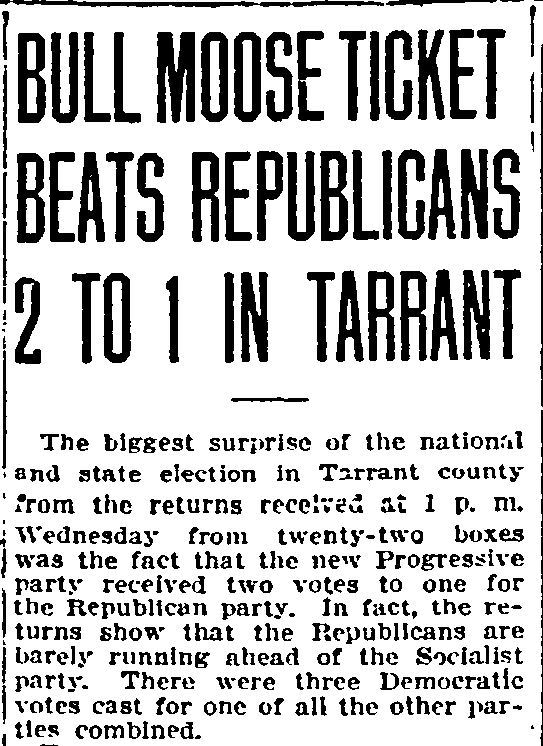 In Tarrant County, as in the nation as a whole, Roosevelt polled better than Taft.
In Tarrant County, as in the nation as a whole, Roosevelt polled better than Taft.
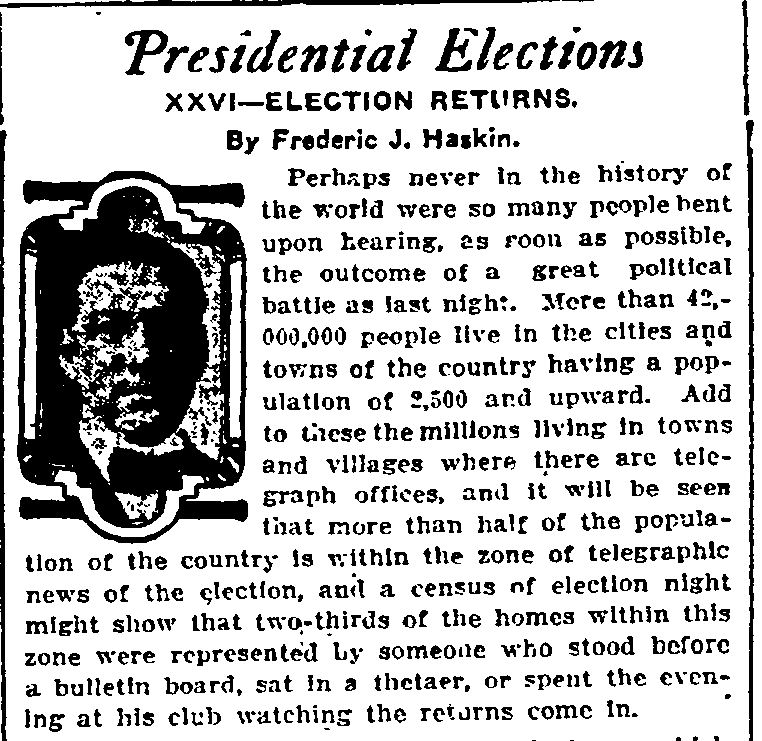 This editorial reminds us that a century ago the world was still very much wired: telegraph and telephone. Radio would not be used to broadcast election returns until 1920.
This editorial reminds us that a century ago the world was still very much wired: telegraph and telephone. Radio would not be used to broadcast election returns until 1920.
 This cartoon by Star-Telegram artist Jay Plangman depicts Roosevelt and Taft under a haystack of Wilson ballots.
This cartoon by Star-Telegram artist Jay Plangman depicts Roosevelt and Taft under a haystack of Wilson ballots.
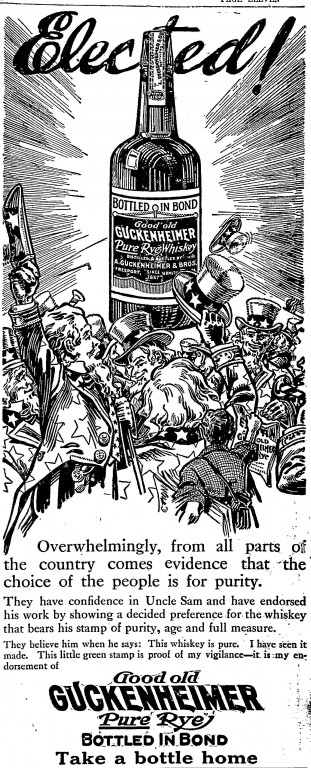 Then, as now, retailers tied their products to current events. Here a gaggle of Uncle Sams is unanimous in voting for “good old Guckenheimer.”
Then, as now, retailers tied their products to current events. Here a gaggle of Uncle Sams is unanimous in voting for “good old Guckenheimer.”
Friends don’t let friends vote drunk.
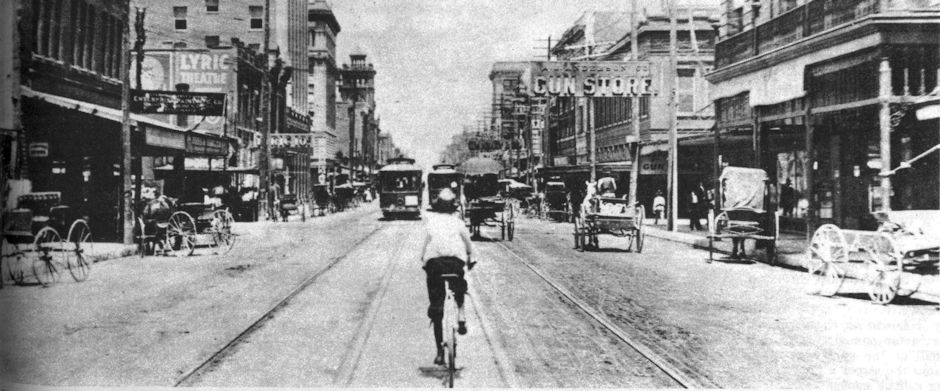





Was “good old Guckenheimer” a local product?
Good old Guckenheimer was made in Pennsylvania. One Fort Worth liquor retailer/wholesaler, H. Brann (“the family liquor house”), sold a couple of whiskeys under its own “”Brann” label, but I assume the product was made elsewhere. I have a post on Fort Worth’s Texas Brewing Company coming up closer to Christmas.